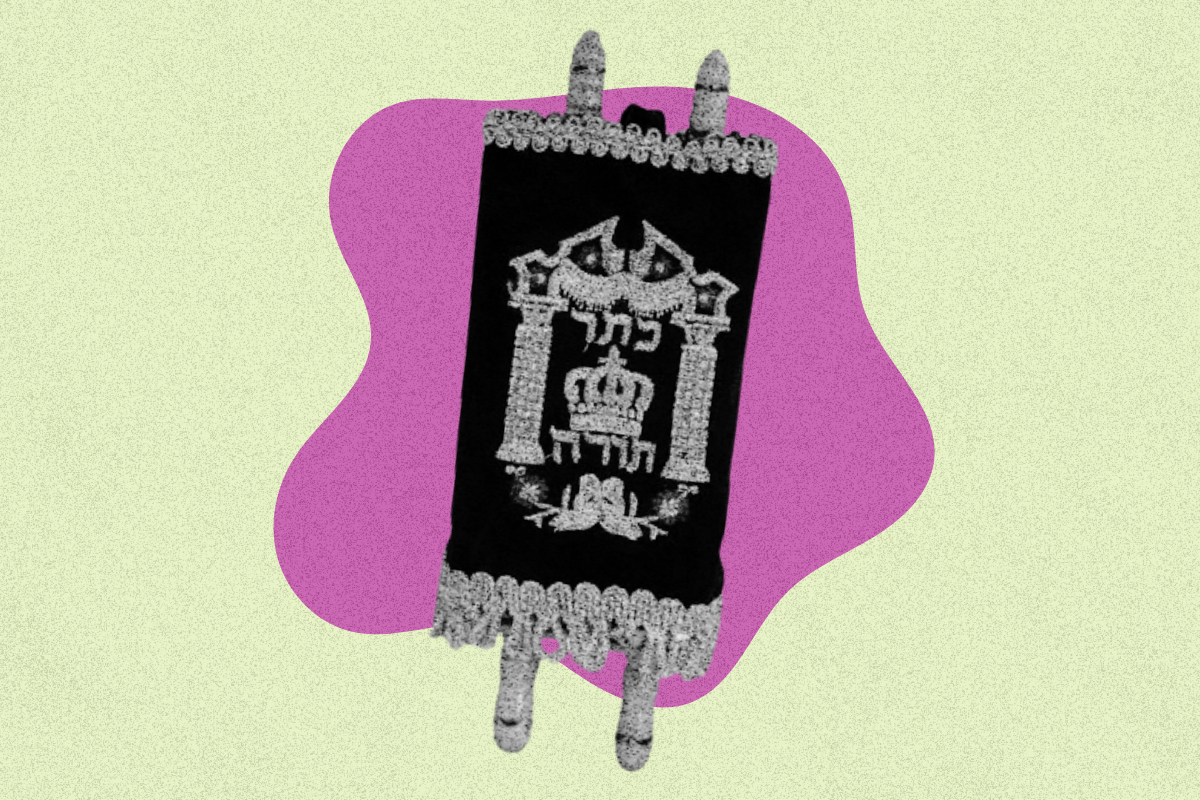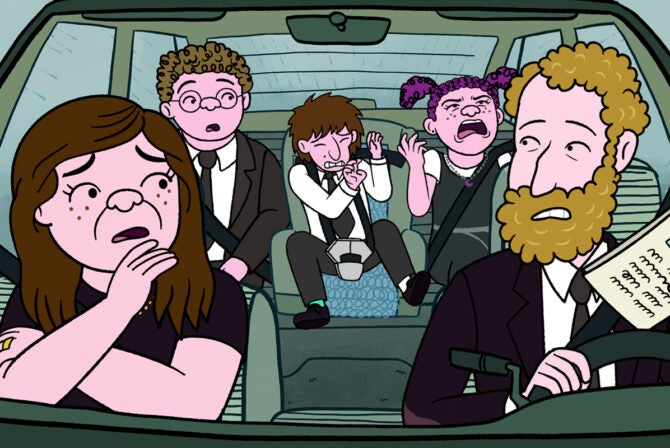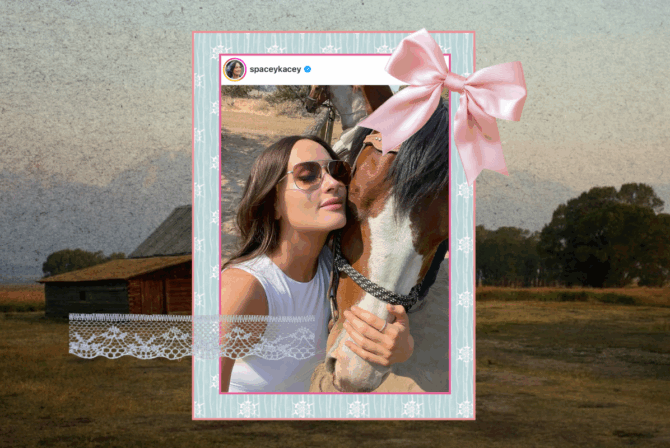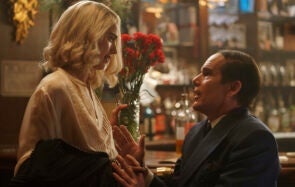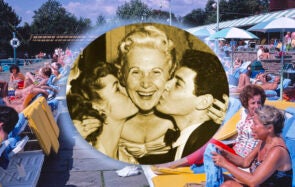There I am, in second grade, on the bima (stage) for the new student ceremony at Temple Emanuel of Far Rockaway in Queens, New York. I am one of the incoming Hebrew school kids. I’m tall for my age, so I tower over the others. We are about to be blessed by the rabbi and get our new student gifts. I am so excited, because I am going to receive my very own miniature Torah scroll, which is wrapped in beautiful royal blue satin.
Each new Hebrew school kid gets one. My two older sisters received theirs, and I loved playing with the satin cover: sliding it on and off, twisting it into a hairbow, trying it on my Barbies.
Imagine my surprise when they decide to switch it up this year. Instead of giving us miniature Torahs, they give us story books. Story books? We’ve been hoodwinked!
The following year, we watch the new kids get blessed. And the new kids get their mini Torahs. I am outraged.
I come up with a plan. I’m going to quit Hebrew school and then re-join, so I can get my own damn mini Torah.
I quit Hebrew school, only to rejoin and stand on the bima again. This time I’m a foot taller than the other new students, like I’ve wandered in off the street and am trying to disguise myself in a line-up. As the rabbi comes over to place his hands on my head and give me a blessing, he gives me the side-eye, as if to say, “I’ve seen you here before.” I receive a blessing and get a new-student gift. Once again, it’s a mini Torah gap year. We each get a story book.
I discover, however, that the fourth grade Hebrew school class is actually fun. There are 11 boys and three girls. The girls are dippy, but the guys clown around all the time and laugh at my jokes. I learn a life lesson that I carry with me to this day: You can be chunky and have a bad haircut. It doesn’t matter. If you can make boys laugh, they’ll like you.
In sixth grade, my public school social life is finally taking shape, and the fun after-school activities with my non-Hebrew-school friends seem to happen on Mondays and Wednesdays, which are the exact days of Hebrew school. I sit my parents down and explain to them that “I’m not feeling it.” Even though both of my older sisters reached the praiseworthy milestone of their bat mitzvahs in front of our whole congregation, I feel like it would be a sham for me to stand up there and be fawned over. “Why spend all that money on feeding the congregation marble sponge cake and juice?” I say to my parents. They appreciate the opportunity to save a few bucks, so they let me quit.
I wander 40 years in the desert of secularity.
I now have a husband and two kids.
I send my kids to Hebrew school, and they do not have the option of dropping out, not in this era of over-programming every minute of their little lives. My kids pick up the language instantly; I don’t say this aloud, but I believe they are both little geniuses. Listening to them, I am astounded by my own illiteracy. I don’t want to look like an ignorant boob at my son’s bar mitzvah. So, when my older child begins his bar mitzvah preparation, I join a Sunday morning Hebrew adult education class at my synagogue, a two-year program.
At 48 years old, I am one of the youngsters in the class. There are 22 of us — 19 feisty, boisterous women of a certain age, and three mild-mannered guys.
There are the knitters (they will complete three afghans and four sweaters the first year alone). The synagogue matriarchs. The learned know-it-alls (why are they even here?). The constant questioners. The clueless (including me). And the guys (two converts and a poet).
I come to find out this class culminates in an adult b’nai mitzvah. I’m not worried because I can always quit. After all, I am the Runaway Bride of Hebrew school.
We spend hours going over this system of symbols known as “trope” which is not anything like the English definition of “trope,” a figure of speech. Hebrew trope indicates the tune you use to sing the Hebrew words in the Torah. These tiny symbols surround the Hebrew letters and are in addition to little vowel marks, which function like training wheels for your pronunciation. Once you know words in context, you no longer need the vowels. And from one week to the next, most of us have forgotten everything.
Each word — each letter of each word — is sounded out, reading right to left, and then put together like an endless train track, and then sung in a “right” tune. Then we are supposed to understand what we are saying! And the actual Torah scroll that is read from at services? I find out for the first time at 48 years old that the actual Torah doesn’t include vowels or trope symbols or punctuation. It is just a sea of ancient, fancy black Hebrew calligraphy, rows and rows of it, in endless columns throughout the scroll.
At our final rehearsal, I approach the real Torah scroll on the reading table. We’re talking genuine animal skin parchment, with hand-calligraphed Hebrew letters that were painstakingly laid out in the precise way every Torah in the world, through the ages, had been done. And now, I am standing before this magnificent scroll, and I feel a wonderful rush of spirit wash over me. This is very cool. With some guidance, and after a few minutes which seem like hours, I see a familiar word: Adonai. Oooh. Oooh. I got one! I GOT ONE! I recognize the word! And then to the right of it is Vayomer. Vayomer, Adonai. Vayomer Adonai… el Moshe, Laymore. Vayomer Adonai, el Moshe Laymore. Look at me go! I am freaking chanting Torah!
I become a bat mitzvah at age 50. I wish I could tell you I dance the hora. But my back is bothering me, and I have plantar fasciitis.
But I no longer need a satin mini Torah, because now, in my heart, I have the real thing.
